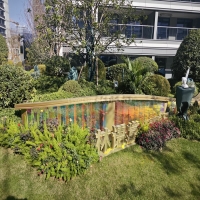Welcome to the website for landscape facilities products and knowledge.
Are there any user feedback loops to improve bin design based on real-world usage?
In the realm of waste management, bin design plays a critical role in ensuring efficiency, convenience, and sustainability. A key question often asked is: *Are there any user feedback loops to improve bin design based on real-world usage?* The answer is a resounding yes.
Modern bin manufacturers and urban planners increasingly rely on user feedback loops to refine designs. These loops involve collecting data from end-users—homeowners, businesses, and municipal workers—about their experiences with bins. Common pain points include lid mechanisms, capacity, material durability, and ease of cleaning. By analyzing this feedback, designers can iterate on prototypes to address these issues.
For example, smart bins equipped with sensors now provide real-time data on usage patterns, such as peak disposal times or frequent overflows. This data informs adjustments in size, shape, or even the placement of bins in public spaces. Community surveys and pilot programs further validate these improvements before mass production.
Ultimately, user feedback loops transform bin design from a static process into a dynamic one, ensuring products evolve to meet real-world needs. This approach not only enhances functionality but also promotes sustainability by reducing waste and optimizing resource use.
By prioritizing user-centric design, the future of waste management looks smarter, cleaner, and more responsive to everyday challenges.
Related search:

Recommendation
Metal and acrylic color-changing combined curtain wall for large-scale public landscape facilities